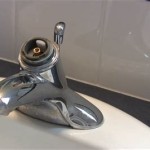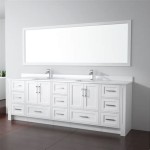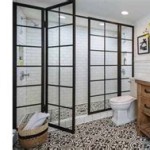18 Sink Bathroom: A Comprehensive Guide
The bathroom sink is an indispensable fixture in any bathroom, serving as the primary hub for personal hygiene and grooming. From the classic porcelain pedestal sink to the contemporary vessel sink, the options available are vast and diverse. Understanding the nuances of these different sink types, along with their associated features, is essential for making informed decisions during bathroom renovation or design. This comprehensive guide will delve into the world of bathroom sinks, exploring 18 key considerations for selecting the perfect sink for your space and needs.
1. Sink Style
The first step in choosing a bathroom sink is to consider the overall style you envision for your bathroom. There are numerous styles to choose from, each with its own distinct aesthetic and functionality. Some popular styles include:
- Pedestal Sink: Known for their elegant and traditional look, pedestal sinks offer a sleek, minimalist design with a freestanding pedestal base. They are ideal for small bathrooms as they take up minimal floor space.
- Vanity Sink: The most common type of bathroom sink, vanity sinks are integrated into a vanity cabinet, providing storage space for toiletries and other bathroom essentials.
- Wall-Mounted Sink: These sinks are mounted directly to the wall, creating a modern and airy look. They offer a sense of openness and are particularly well-suited for smaller bathrooms.
- Vessel Sink: Vessel sinks are characterized by their unique, bowl-like design that sits atop the countertop. They add a touch of elegance and sophistication to any bathroom.
2. Sink Material
The material of your bathroom sink plays a significant role in its durability, aesthetics, and maintenance requirements. Some common materials include:
- Porcelain: Known for its classic white finish, porcelain is durable, scratch-resistant, and easy to clean.
- Ceramic: Similar to porcelain, ceramic sinks are durable and affordable, but they can be more prone to chipping or cracking.
- Stone: Natural stone sinks, such as granite or marble, offer a luxurious and unique appearance. However, they are more porous and may require sealing to prevent staining.
- Stainless Steel: Stainless steel sinks are durable, hygienic, and resistant to heat and scratches. However, they can be prone to water stains if not properly maintained.
- Glass: Glass sinks add a touch of modern elegance to any bathroom. However, they require careful handling as they can be susceptible to chips and cracks.
3. Sink Size
Choosing the right sink size is crucial for ensuring functionality and comfort. Consider the available space in your bathroom, the number of people using it, and the desired level of functionality. Smaller sinks are suitable for single-person bathrooms or powder rooms, while larger sinks are more appropriate for families or bathrooms with limited countertop space.
4. Sink Depth
Sink depth directly affects the usability and splash resistance of your sink. Deep sinks provide ample space for washing hands and dishes, while shallow sinks offer a more minimalist look. Consider the frequency of use and the desired level of privacy when choosing a sink depth.
5. Sink Shape
Sink shape influences both aesthetics and functionality. Popular sink shapes include oval, round, square, and rectangular. The shape should complement the overall design of your bathroom, creating a visually cohesive space.
6. Sink Bowl Configuration
Bathroom sinks can have one or two bowls, each with its own unique considerations. Single-bowl sinks offer a spacious work area for washing hands and dishes, while double-bowl sinks provide separate compartments for washing and rinsing.
7. Faucet Placement
The placement of your faucet is crucial for optimal functionality and aesthetics. Consider the desired flow of water, the proximity to other fixtures, and the overall style of your bathroom. Popular faucet placements include center-set, widespread, and wall-mounted.
8. Drain Location
The drain location should align with the placement of your faucet and the overall layout of your sink. Centered drains are common, while off-center drains can be more aesthetically pleasing.
9. Overflow Drain
An overflow drain prevents water from overflowing from the sink, providing an added layer of safety. While not essential, overflow drains are recommended for bathrooms with young children or elderly individuals.
10. Sink Finish
The finish of your sink affects its appearance and durability. Common sink finishes include polished, brushed, and matte. Polished finishes offer a reflective surface, while brushed finishes provide a subtle texture. Matte finishes are less prone to fingerprints and scratches.
11. Installation Type
Sink installation types vary, from countertop-mounted to undermount to wall-mounted. Each type offers unique advantages and considerations. Countertop-mounted sinks are easy to install and maintain, while undermount sinks create a seamless and clean look. Wall-mounted sinks offer a sleek, contemporary aesthetic.
12. Sink Features
Some bathroom sinks offer additional features, such as soap dishes, towel bars, and integrated storage. These features can enhance functionality and convenience, adding to the overall user experience.
13. Accessibility
For bathrooms used by individuals with mobility challenges, accessibility is paramount. Consider the height of the sink, the availability of grab bars, and the clearance around the sink for wheelchair access.
14. Maintenance Requirements
Different sink materials require different maintenance routines. Porcelain and ceramic sinks are generally low-maintenance, while natural stone sinks require regular sealing to prevent staining. Stainless steel sinks benefit from regular cleaning to prevent water spots.
15. Budget
The cost of bathroom sinks varies greatly depending on the material, style, features, and brand. Set a realistic budget and stick to it to avoid overspending.
16. Warranty
Ensure that your chosen sink comes with a comprehensive warranty covering defects in materials and workmanship. A warranty can provide peace of mind and protection against unexpected issues.
17. Aesthetics
The aesthetic appeal of your sink should complement the overall design of your bathroom. Consider the color, finish, and style of the sink to create a harmonious and visually pleasing space.
18. Personal Preferences
Ultimately, the best bathroom sink for you is the one that meets your individual needs and preferences. Consider your lifestyle, usage patterns, and aesthetic tastes when making your final selection.

18 In Bathroom Vanities At Com

Why Do I Need An 18 Inch Deep Bathroom Vanity Anve Kitchen And Bath

Domani Lilley 18 In W X 17 D 33 H Single Sink Freestanding Bath Vanity White With Cultured Marble Top B18x20249 The Home Depot

Project Source 18 In Gray Single Sink Bathroom Vanity With White Cultured Marble Top The Vanities Tops Department At Com

Elegant Lighting Boise Walnut Brown 18 Inch Vanity Sink Set Vf41018wb Bellacor

18 White Single Sink Vanity Backsplash Com

Home Decorators Collection Arvesen 18 In W X 12 D 34 H Single Sink Bath Vanity With White Ceramic Top 18t The Depot

Acf C13 By Nameek S Cubical Small Bathroom Vanity Modern Floating 18 Thebath

Project Source 18 In Golden Single Sink Bathroom Vanity With White Cultured Marble Top The Vanities Tops Department At Com
How To Measure A Vanity Sink Bathroom Dimensions Standard Size Vevano
Related Posts







